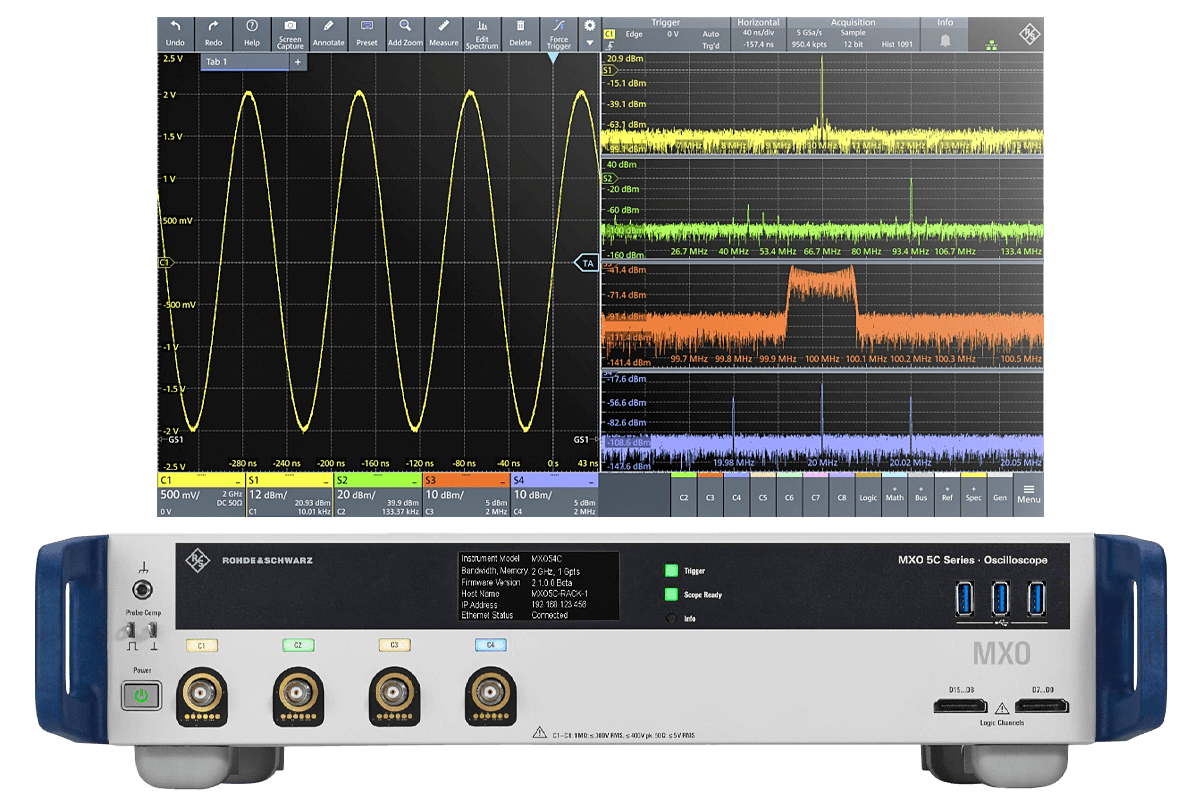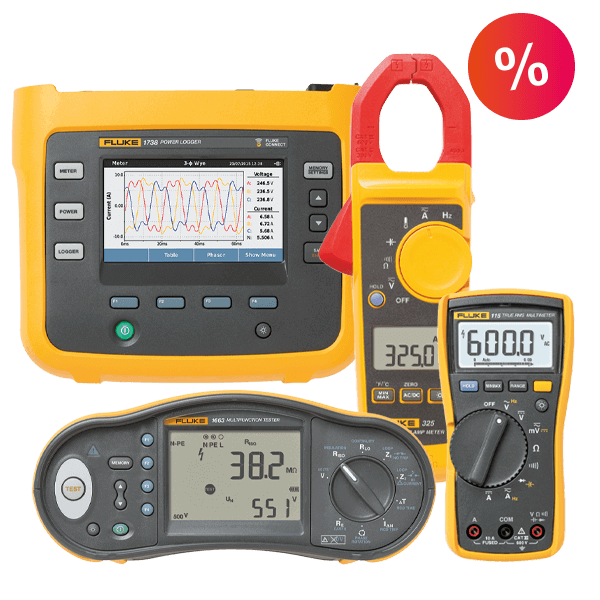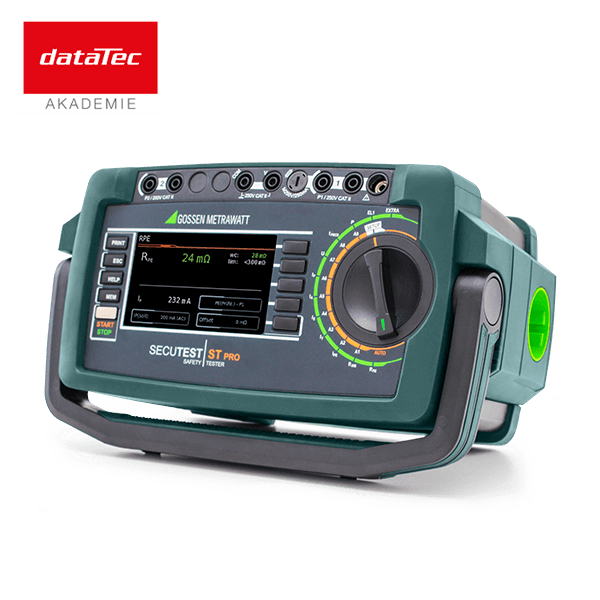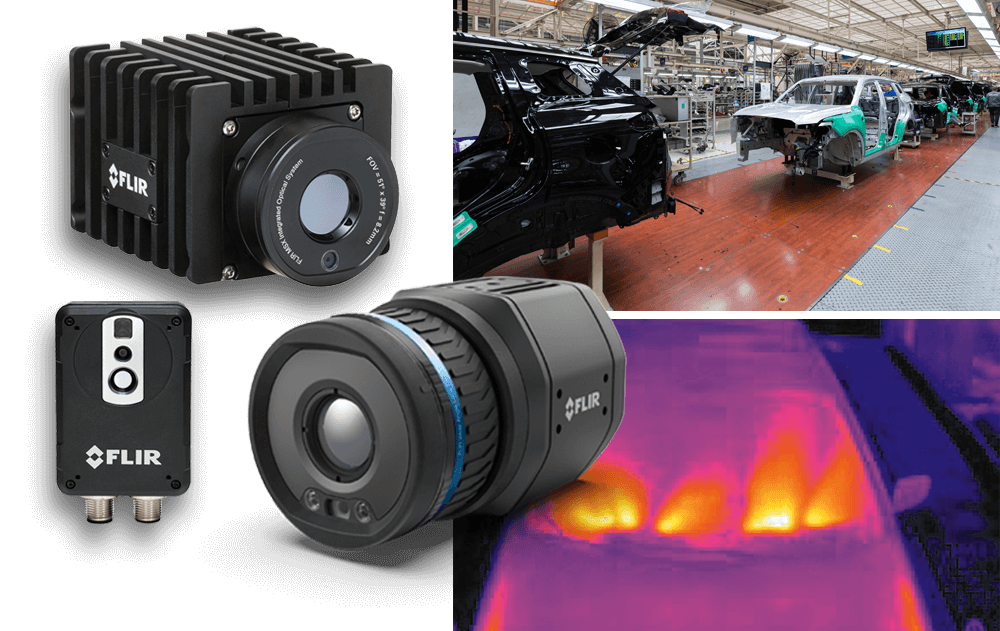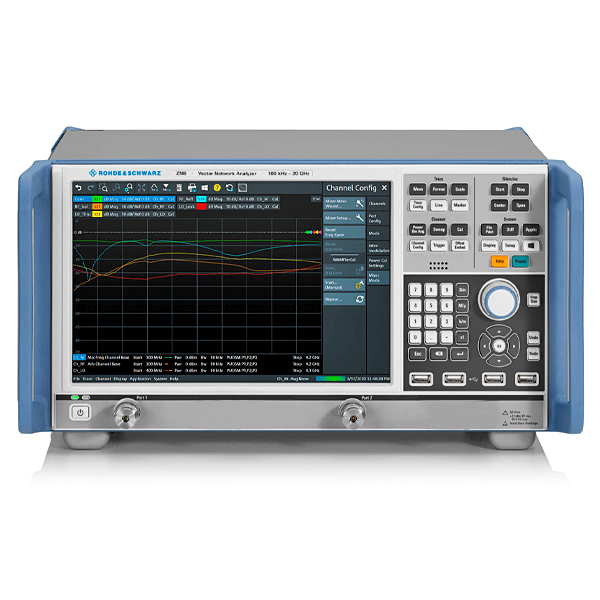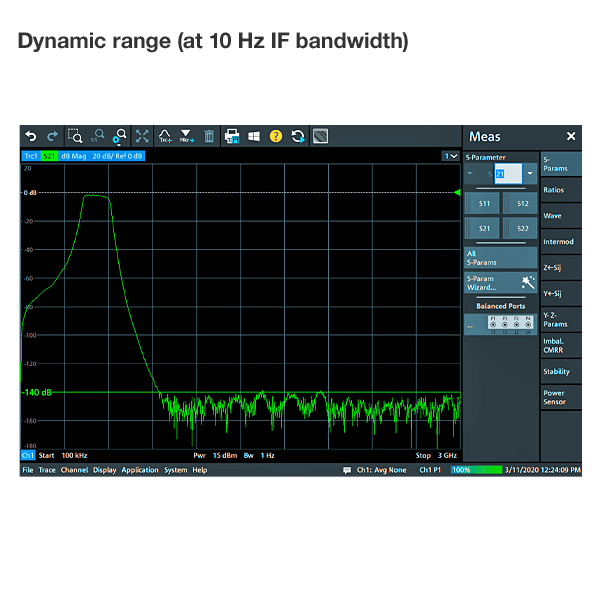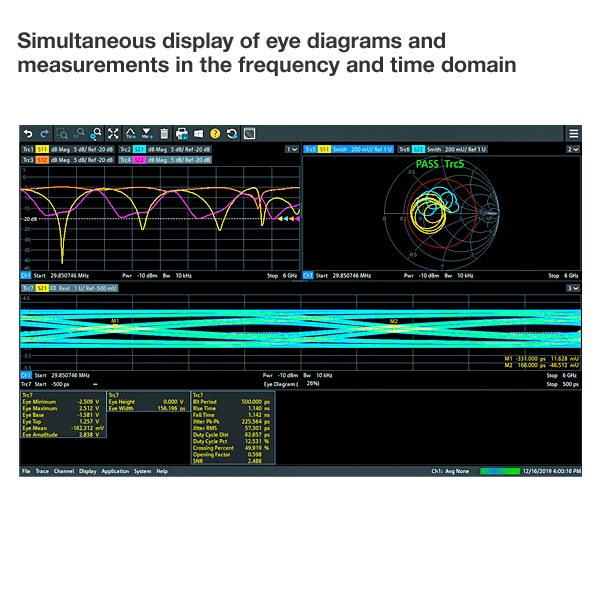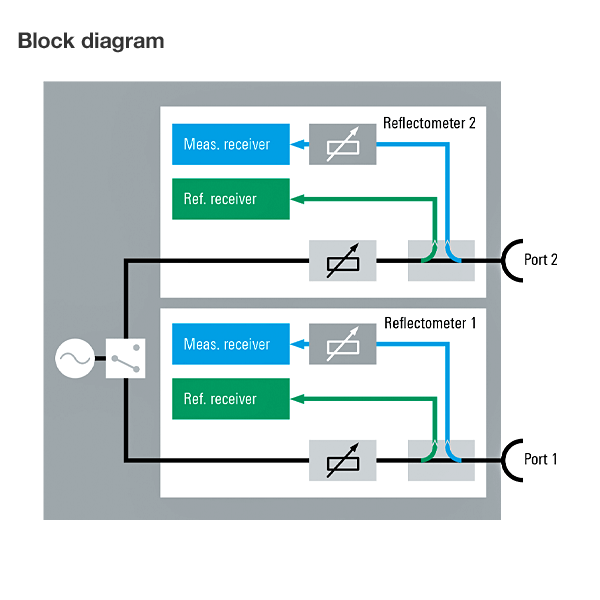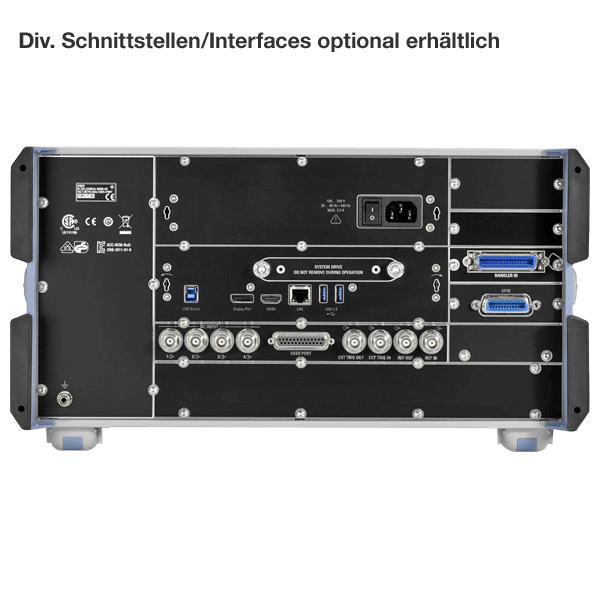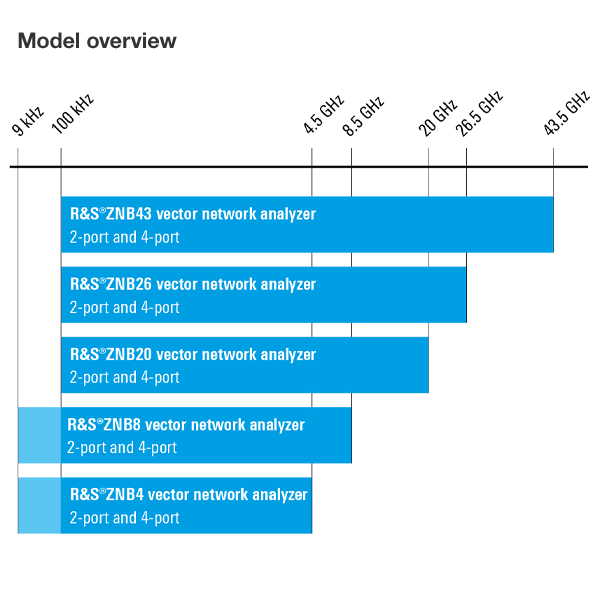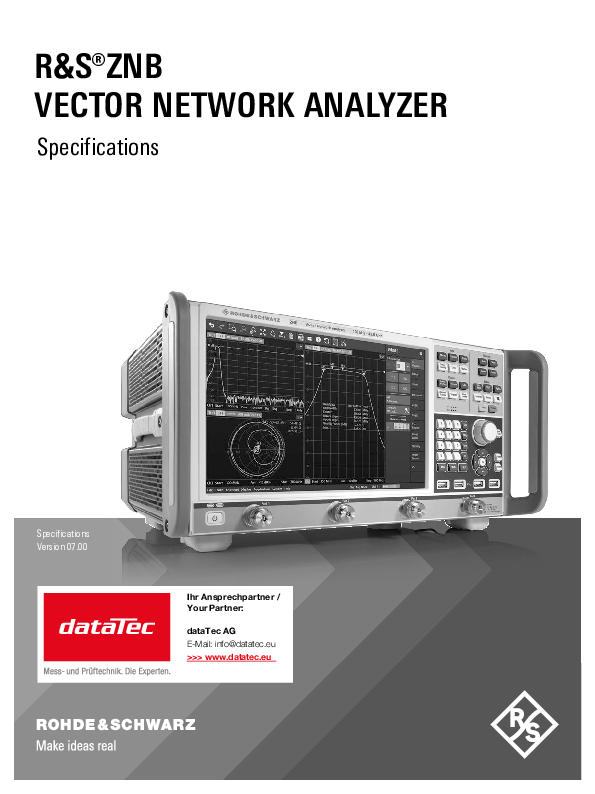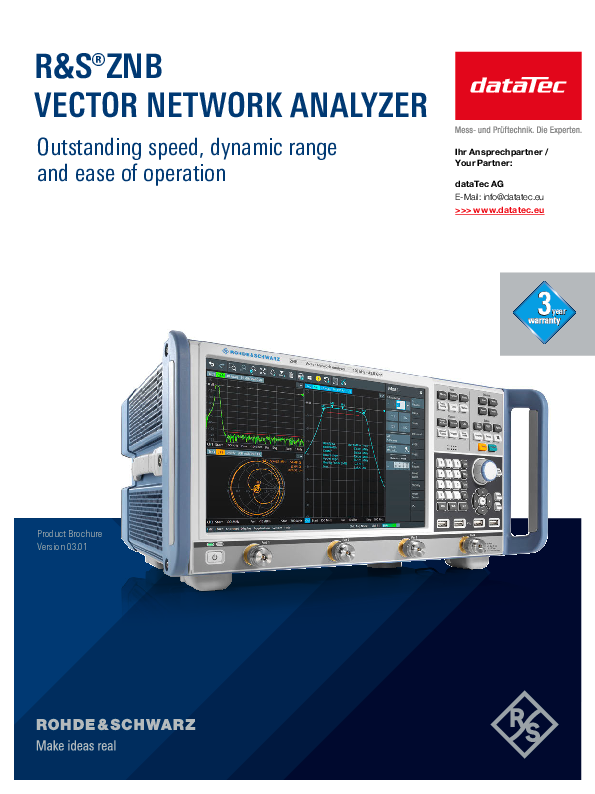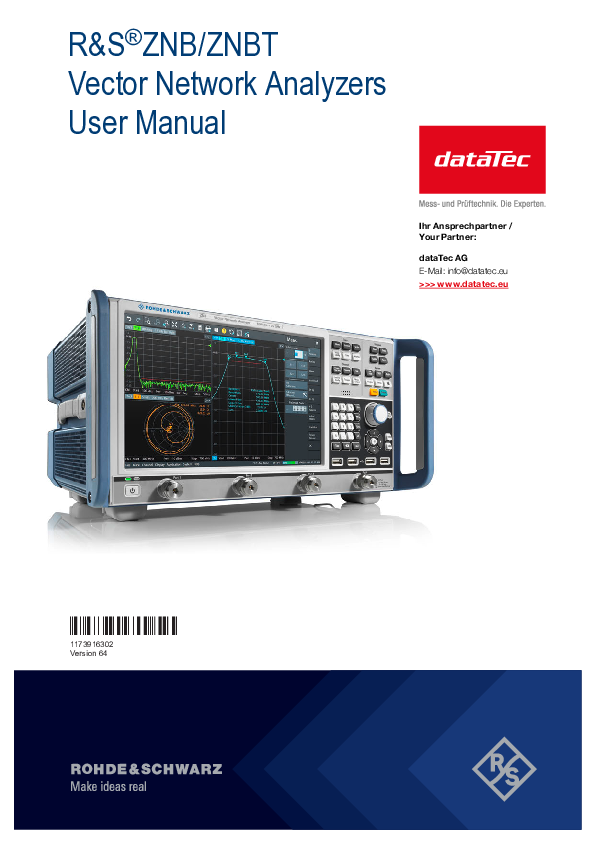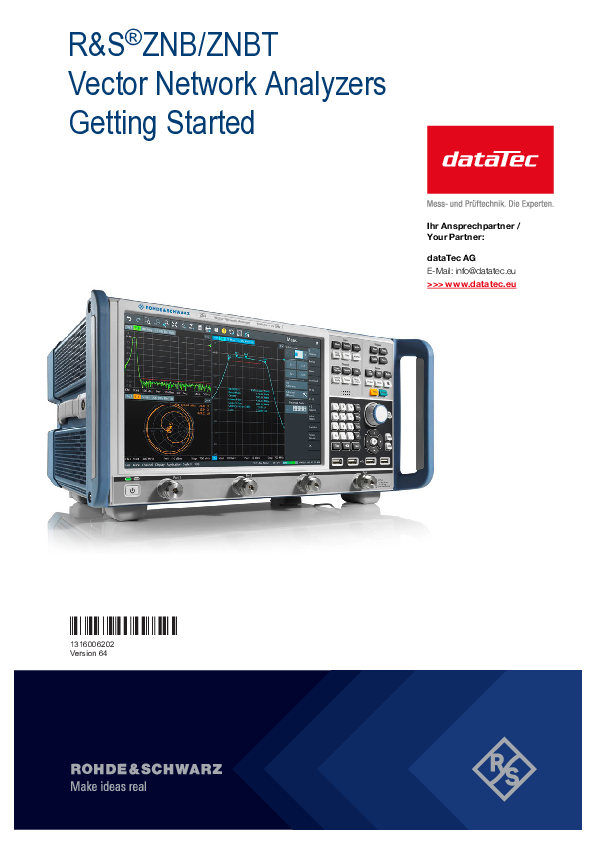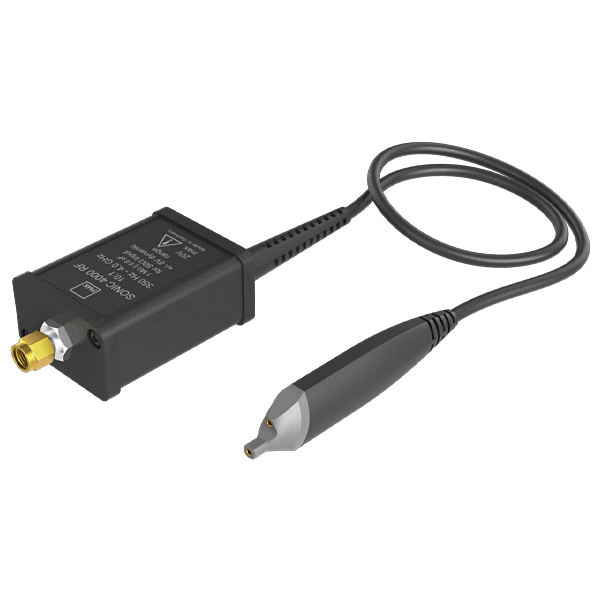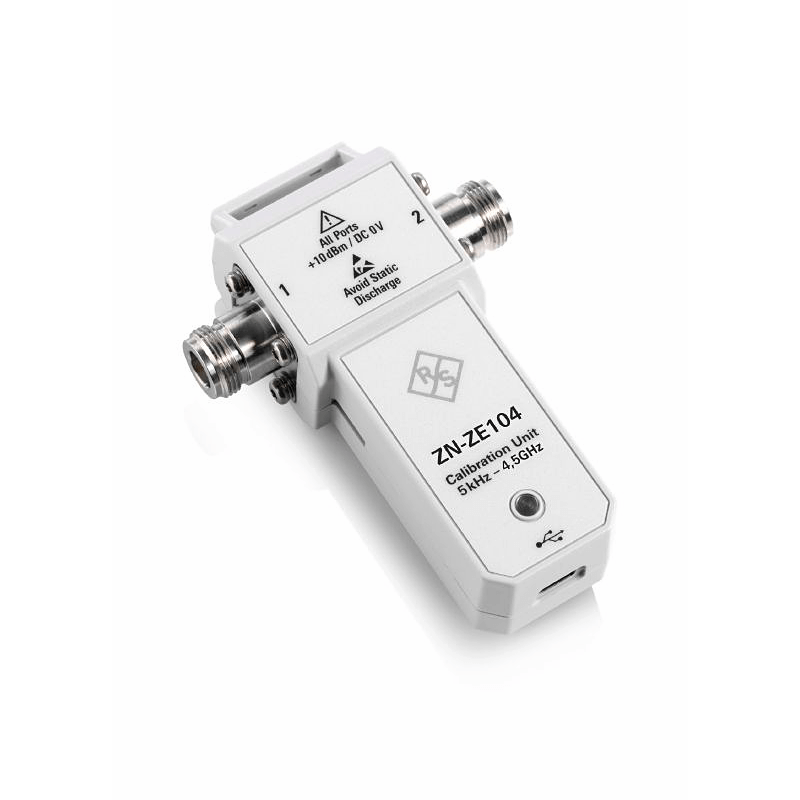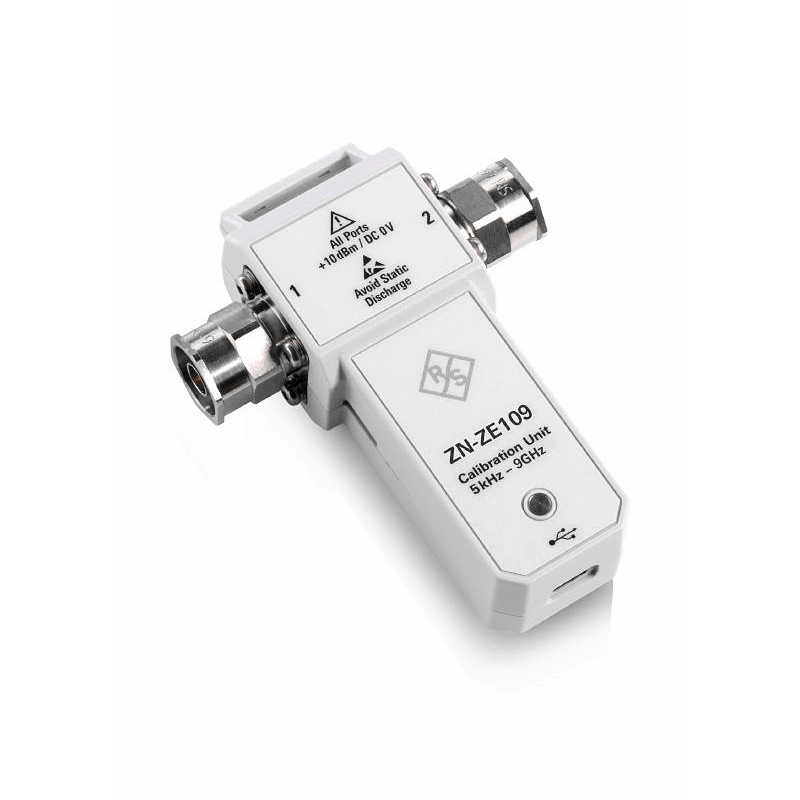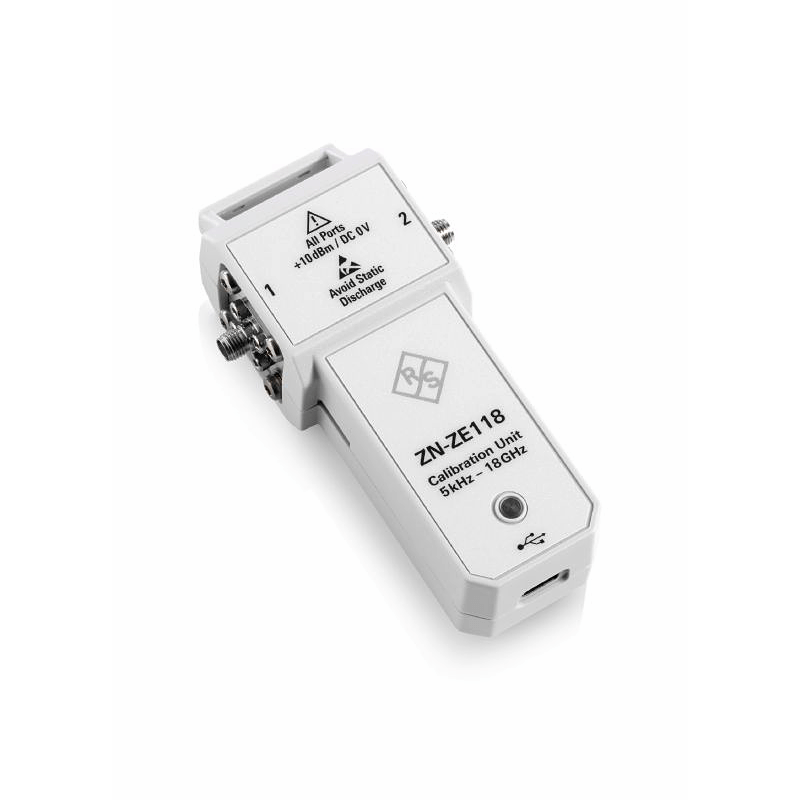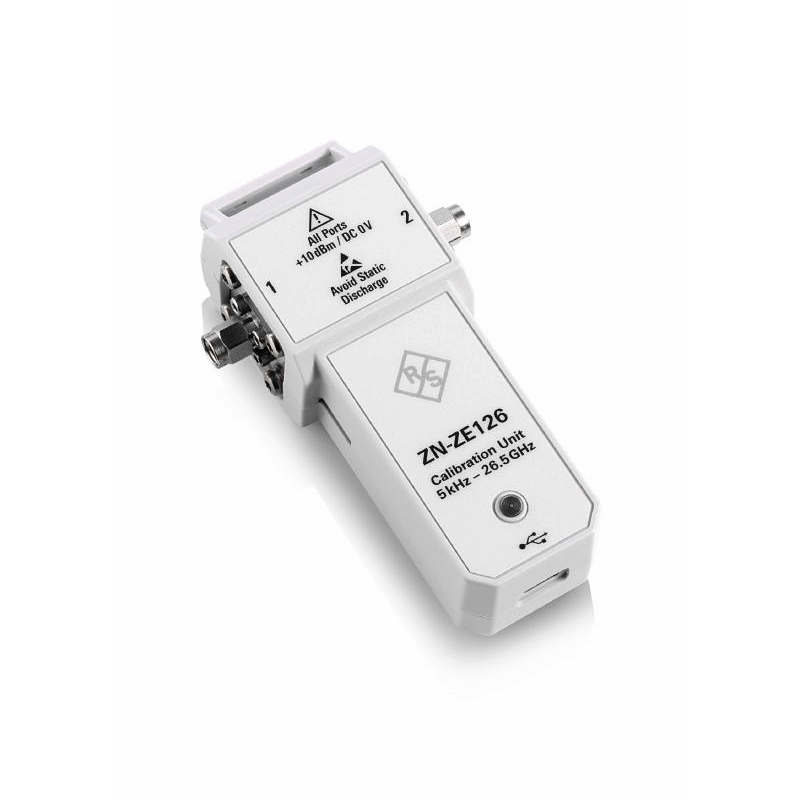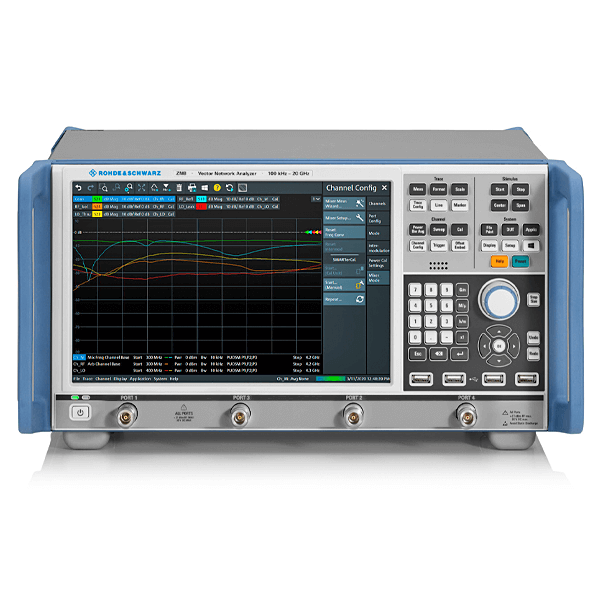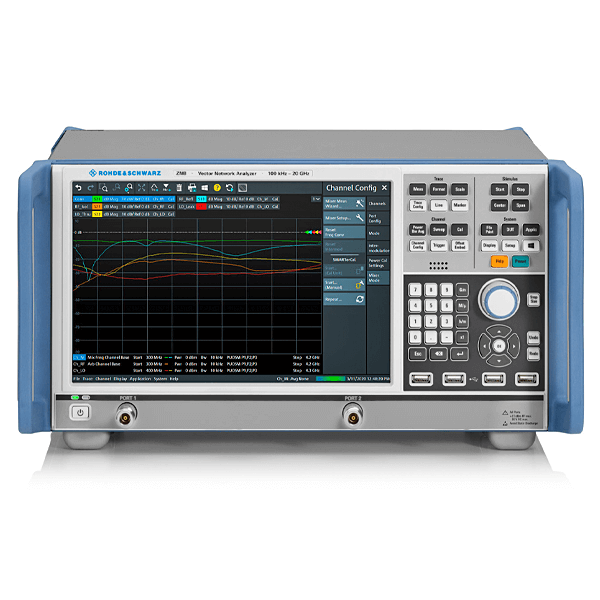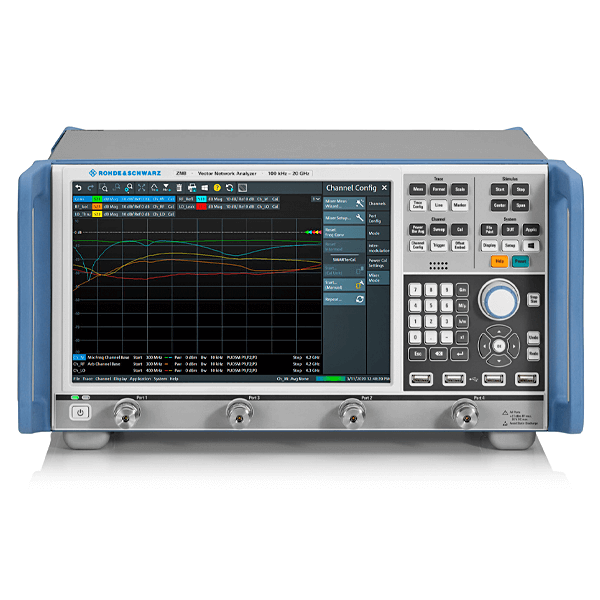Rohde&Schwarz ZNB26 | Vector Network Analyzer, Gen 2 Series, 2 Port, 100 kHz to 26.5 GHz (1334.3330.63)
Manufacturer number: 1334.3330.63
On Request
Rohde & Schwarz ZNB26 | Vector network analyzer, model .63, 2 ports, frequency range 100 kHz to 26.5 GHz, analysis bandwidth up to 10 MHz, dynamic range up to 128 dB, 2.92 mm (M) connectors (1334.3330.63).
- Frequency range: 100kHz - 26.5GHz
- Number of test ports: 2 ports, expandable to 24 ports using switch matrices
- Dynamic range: 128dB
- Trace Noise: ≤0.002dB
- Output power: up to +12 dBm (typ.)
- Test Parameters: S-Parameters (single-ended, mixed-mode) // Waves and Wave Ratios // Z < -Sij, Y < -Sij, Y/Z Parameters // Imbalance/CMRR // Stability // Power
- Large, brilliant LCD screen: touch screen, 12.1 inch diagonal
- Interfaces: 4x USB 2.0 type A, 2x USB 3.0, LAN, BNC reference input/output (10 MHz), HDMI for external monitor, external trigger BNC, optional: GPIB, handler I/O, RFFE-GPIO
- Power requirements: 100 to 240 VAC, 50/60 and 400 Hz
- Dimensions: W 462.5 × H 239.6 × D 361.5 mm
- Weight: 14kg
Technical Data
| Article number: | 1334.3330.63 |
|---|---|
| Crosstalk: | No |
| Dimensions (L x W x H) (mm): | 361,5 x 462,5 x 239,6 |
| Display: | 1280 × 800, 125 dpi |
| IF-BW: | 1 Hz - 10 kHz |
| Input impedance: | 50 Ω |
| Interfaces: | USB, LAN, BNC, DP, HDMI Optional: GPIB |
| Max. Dynamic range: | 128 dB (typ.) |
| Measuring speed for 201 points: | 0,002 s |
| Min. output power: | -30 dBm |
| Model: | ZNB26 |
| Number of ports: | 2 |
| Screen size: | 30,7 cm |
| Screen type: | WXGA, LCD, Touchscreen |
| Special features: | Vector network analyzer, RF power meter |
| Time range analysis: | Optional |
| Warranty (years): | 3 |
| Weight (kg): | 14 |
| max. Frequency (GHz): | 26.5 |
| max. Output power: | +12 dBm |
| min. frequency (kHz): | 100 |
Documents & Downloads
Description
ZNB26 | Vector Network Analyzer, Gen 2 Series, 2 Port, 100 kHz to 26.5 GHz (1334.3330.63)
The ZNB vector network analyzers from Rohde and Schwarz combine measurement accuracy with high measurement speeds (< 5 µs/measuring point) up to 40 GHz. The analyzers impress with their high dynamic range (up to 140 dB at 10 Hz analysis bandwidth), their low noise (below 0.004 dB RMS at 10 kHz analysis bandwidth) and their high output power (up to +13 dBm). With a frequency range from 100 kHz to 26.5 GHz, the ZNB26 vector network analyzer is ideal for e.g. B. in the communications and electronics industry, for design verification of digital high-speed printed circuit boards or for applications in the aerospace industry. It is ideal for the development and production of HF components such as amplifiers, mixers, filters, cables, etc.
All ZNB vector network analyzers are available with two or four ports. For even more complex measurements, the number of ports can be expanded with switching matrices, e.g. B. to characterize HF components for modern communication devices. With a four-port device, for example, two matrices with two input and 24 output ports can be combined in order to measure DUTs with up to 48 ports, e.g. B. Front-end modules for smartphones. The matrix type is recognized and the gate numbers are assigned automatically so that the user can start measuring quickly. S-parameters and wave sizes are selected directly via the network analyzer's user interface.
High dynamics and measurement accuracy for high demands:
- Performance for demanding HF components: high dynamics of up to 140 dB for fast measurement of high-blocking DUTs, excellent raw data for high basic accuracy and outstanding temperature stability for long calibration intervals
- Short measurement times for high throughput in production: fast synthesizers with switching times of less than 10 µs for high sweep rates and fast measurements, high dynamics and optimal IF bandwidths
- Manual and automatic calibration methods enable the right calibration for every measurement application
- Clear, flat menu structure for simple measurement processes: enables rapid work and avoids operating errors
Conveniently characterize active and passive RF components:
- Fast (de‑)embedding and fast impedance matching of DUTs using virtual matching networks
- Mixed mode S parameters for characterizing balanced DUTs
- Design measurement setups individually using specially defined S‑parameters
- Extensive evaluation functions for efficient analysis of measurement curves
- Amplifier measurements with large level sweep range and receiver attenuators
- Time domain analysis for finding joints and for filter adjustment
- Frequency-converting measurements on mixers and amplifiers – quick and easy with two independent, internal generators




